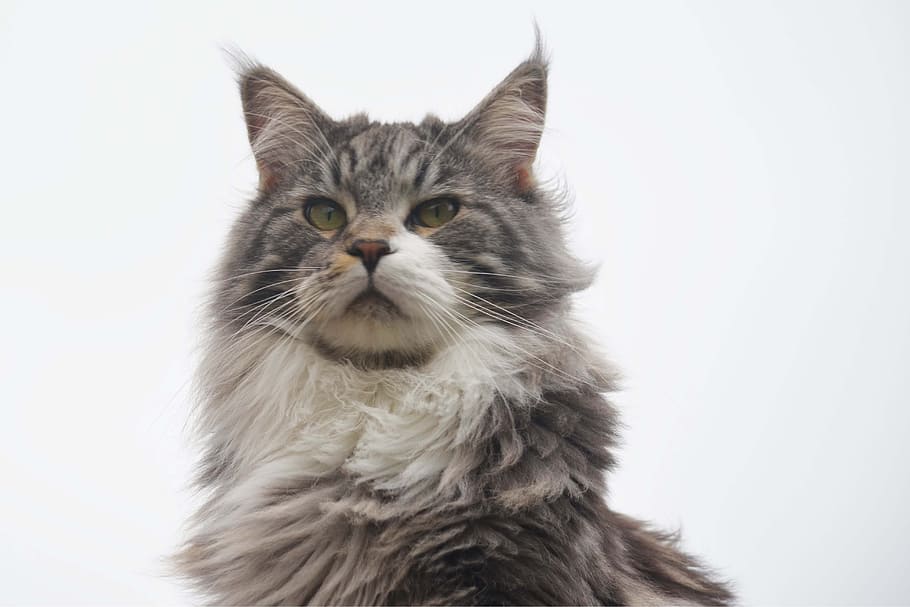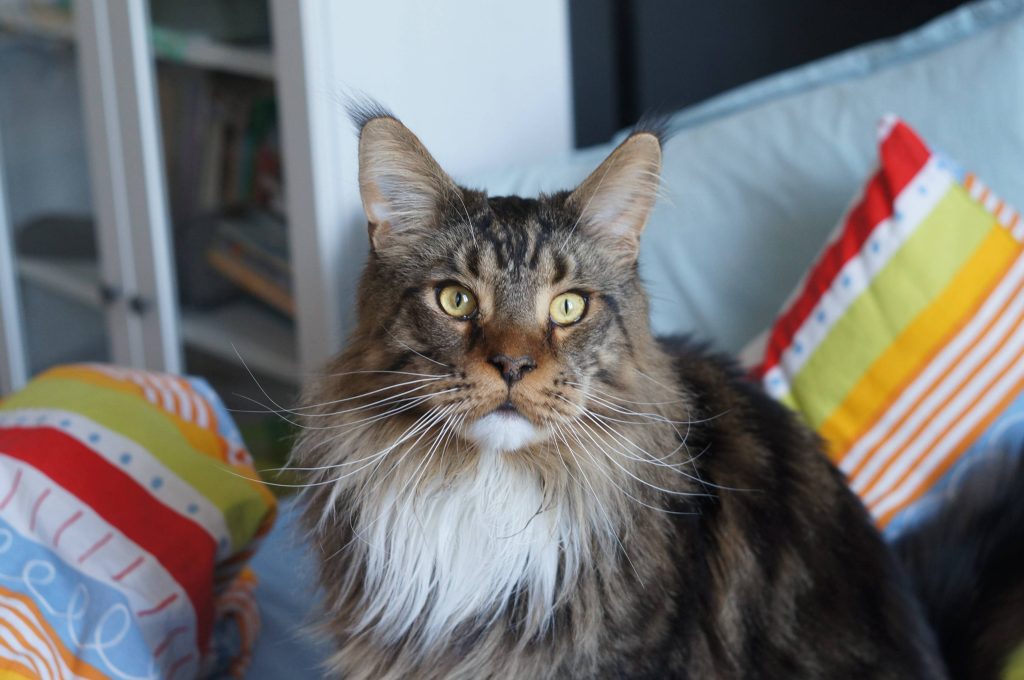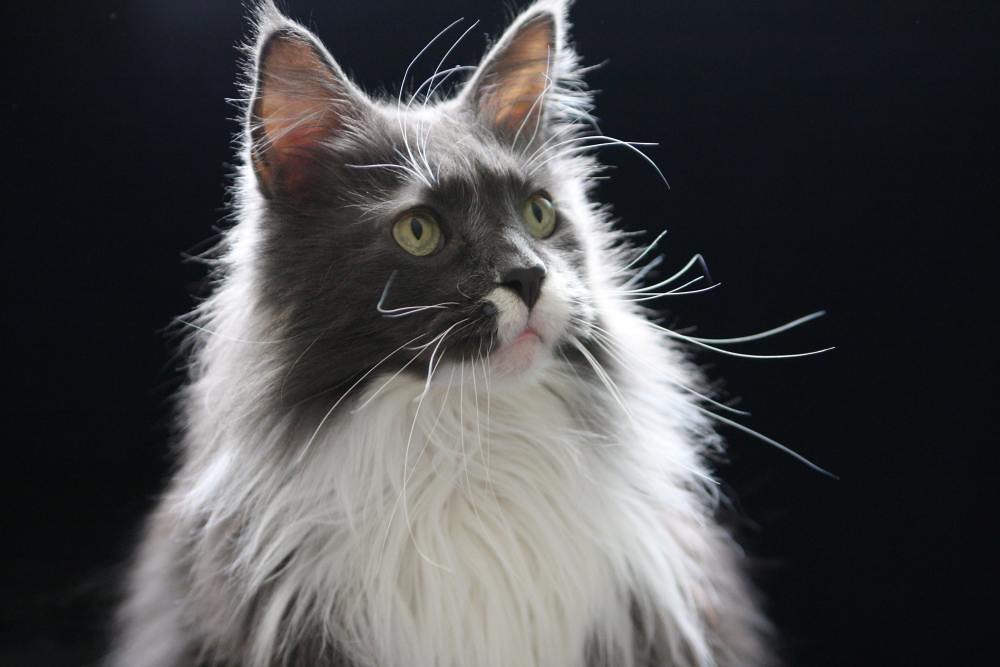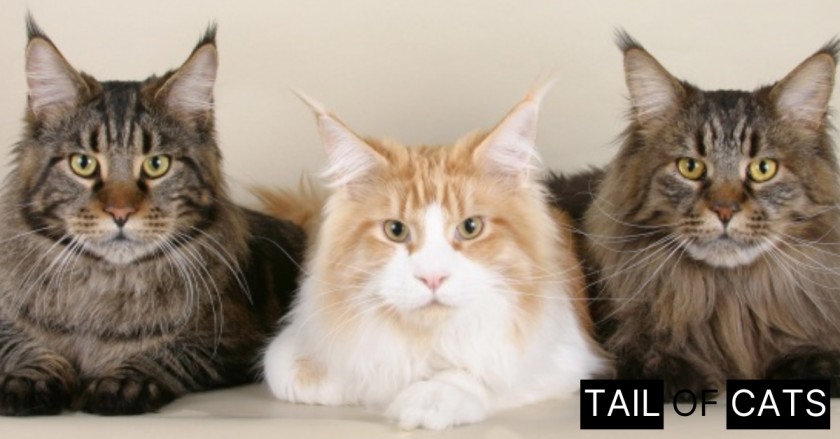Maine Coon cats are renowned for their majestic fluffiness, setting them apart from many other feline breeds. This article delves into the reasons behind their iconic fur and provides an overview of the breed’s unique characteristics. Originating from the cold terrains of North America, these cats have evolved with a coat that not only adds to their aesthetic appeal but also serves functional purposes.
The Evolution of Fluffiness
Maine Coon cats have a coat that’s more than just for show. Its primary function is to provide insulation against the harsh cold weather, especially during the winter months in their native regions1.
Interestingly, their fluffy tails draw comparisons to other animals known for their bushy tails. Raccoons, arctic foxes, and squirrels, for instance, all have tails that help them navigate and survive in cold climates. This has led to an urban legend suggesting that Maine Coons might share ancestry with raccoons. While this is genetically impossible, the resemblance has fueled such tales, adding to the mystique of the breed.

Understanding the Maine Coon’s Coat
The Maine Coon’s fur is distinct, comprising three layers. The two undercoat layers serve as insulation, keeping the cat warm during colder months. As seasons change, so does the Maine Coon’s coat. It thickens to combat the cold and sheds some of its undercoat in the summer to stay cool.
As they mature, Maine Coons develop a third layer known as the guard coat. This layer is not only long and thick but also water-resistant, making these cats well-equipped for snowy escapades.
Beyond its functional aspects, the Maine Coon’s coat is a spectacle of colors and patterns. From solid blacks, blues, and creams to patterns like mackerel, smoke, and tabby, the variety is truly vast.
RELEVANT: Maine Coon: The Gentle Giant of the Feline World
The Journey to Full Fluffiness
Maine Coon kittens are born with a coat that’s quite different from the luxurious fur they’re known for in adulthood. Initially, their fur is short and fine, making them resemble many other kitten breeds.
However, as they grow, a transformation begins. By the age of eight weeks, they start developing a fluffier coat, and this fluffiness continues to evolve until they reach around four years of age. One of the most distinctive features of Maine Coons, the ear tufts, become noticeable after a few months, followed by the majestic neck ruff.

Challenges of Owning a Fluffy Maine Coon
While the fluffiness of a Maine Coon is undeniably appealing, it comes with its own set of challenges. Owners often find themselves combatting regular shedding, making lint rollers an essential household item.
The long and dense fur can also act as a magnet for dirt, dust, and even litter, requiring frequent checks and cleaning. Additionally, if not groomed regularly, the fur can become matted, leading to discomfort for the cat.
Another common challenge Maine Coon owners face is the occurrence of hairballs. Due to their self-grooming habits, these cats ingest some of their long hairs, which later regurgitate as hairballs.
Grooming Tips for Maintaining the Fluff
To ensure that a Maine Coon’s coat remains in top condition, regular grooming is paramount. Spending just five minutes brushing your Maine Coon at least twice a week can prevent the fur from matting.
For effective grooming, it’s essential to have the right tools. A wide, soft-bristled brush is ideal as it gently goes through the fur without being abrasive to the cat’s skin. For tackling any beginning mats, a fine-tooth comb is invaluable.
A healthy Maine Coon coat should be fluffy, shiny, and free from dander, bumps, or bald patches. Diet plays a crucial role in maintaining this health. Ensuring your Maine Coon has a diet rich in omega fatty acids can give its coat a healthy shine. Additionally, proper hydration is vital as a dehydrated cat’s coat can appear dull.

When a Maine Coon Isn’t Fluffy
Every Maine Coon owner anticipates the day their feline friend will flaunt a full, fluffy coat. However, sometimes, a Maine Coon might not appear as fluffy as expected. Several reasons could account for this:
- Mixed Breed: If your Maine Coon is a mixed breed, it might not have inherited the gene responsible for the long fur characteristic of purebred Maine Coons.
- Young Age: Maine Coon kittens and young cats might not have developed their full coat yet. Patience is key, as their fur continues to evolve until they’re around four years old.
- Not a Maine Coon: It’s also possible that the cat might not be a Maine Coon at all. If there’s doubt about the breed, consulting with a professional or breeder can provide clarity.
For those looking to enhance the volume and health of their cat’s fur, several tips can be beneficial:
- Regular Brushing: This not only detangles the fur but also stimulates hair growth.
- Fish Oil Supplements: Known to improve the health of a cat’s skin and hair, fish oil can be a valuable addition to their diet1.
- Occasional Baths: While cats are generally not fans of water, an occasional bath can help remove dirt and debris, giving the fur a fresher appearance1.
Conclusion
Maine Coons, with their majestic appearance and endearing personalities, have captured the hearts of many. Whether your Maine Coon boasts a thick, fluffy coat or has a sleeker appearance, it’s essential to embrace their uniqueness. After all, it’s not just the fur that makes a Maine Coon special, but their loving nature, playful antics, and the sheer joy they bring to a household.

